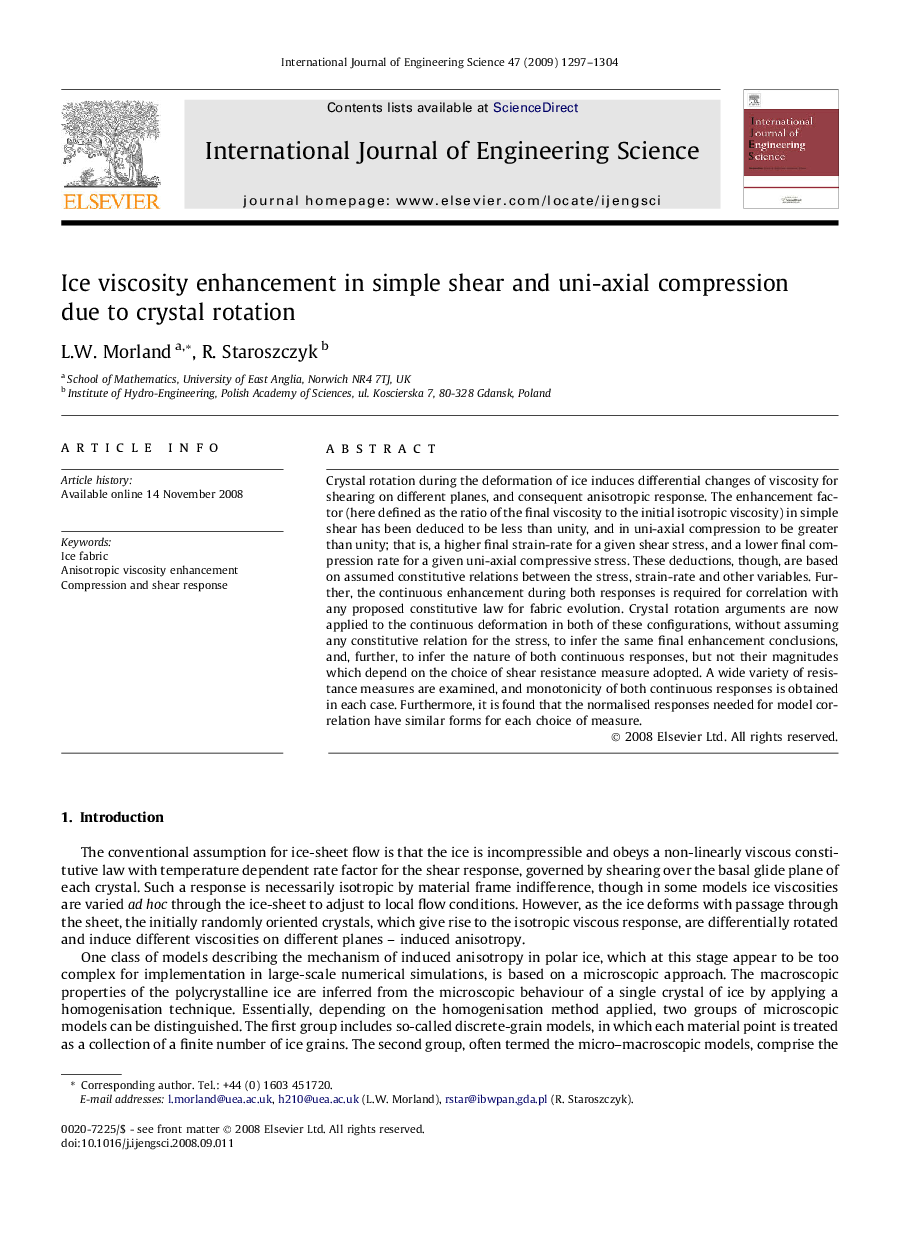| Article ID | Journal | Published Year | Pages | File Type |
|---|---|---|---|---|
| 825518 | International Journal of Engineering Science | 2009 | 8 Pages |
Abstract
Crystal rotation during the deformation of ice induces differential changes of viscosity for shearing on different planes, and consequent anisotropic response. The enhancement factor (here defined as the ratio of the final viscosity to the initial isotropic viscosity) in simple shear has been deduced to be less than unity, and in uni-axial compression to be greater than unity; that is, a higher final strain-rate for a given shear stress, and a lower final compression rate for a given uni-axial compressive stress. These deductions, though, are based on assumed constitutive relations between the stress, strain-rate and other variables. Further, the continuous enhancement during both responses is required for correlation with any proposed constitutive law for fabric evolution. Crystal rotation arguments are now applied to the continuous deformation in both of these configurations, without assuming any constitutive relation for the stress, to infer the same final enhancement conclusions, and, further, to infer the nature of both continuous responses, but not their magnitudes which depend on the choice of shear resistance measure adopted. A wide variety of resistance measures are examined, and monotonicity of both continuous responses is obtained in each case. Furthermore, it is found that the normalised responses needed for model correlation have similar forms for each choice of measure.
Related Topics
Physical Sciences and Engineering
Engineering
Engineering (General)
Authors
L.W. Morland, R. Staroszczyk,
